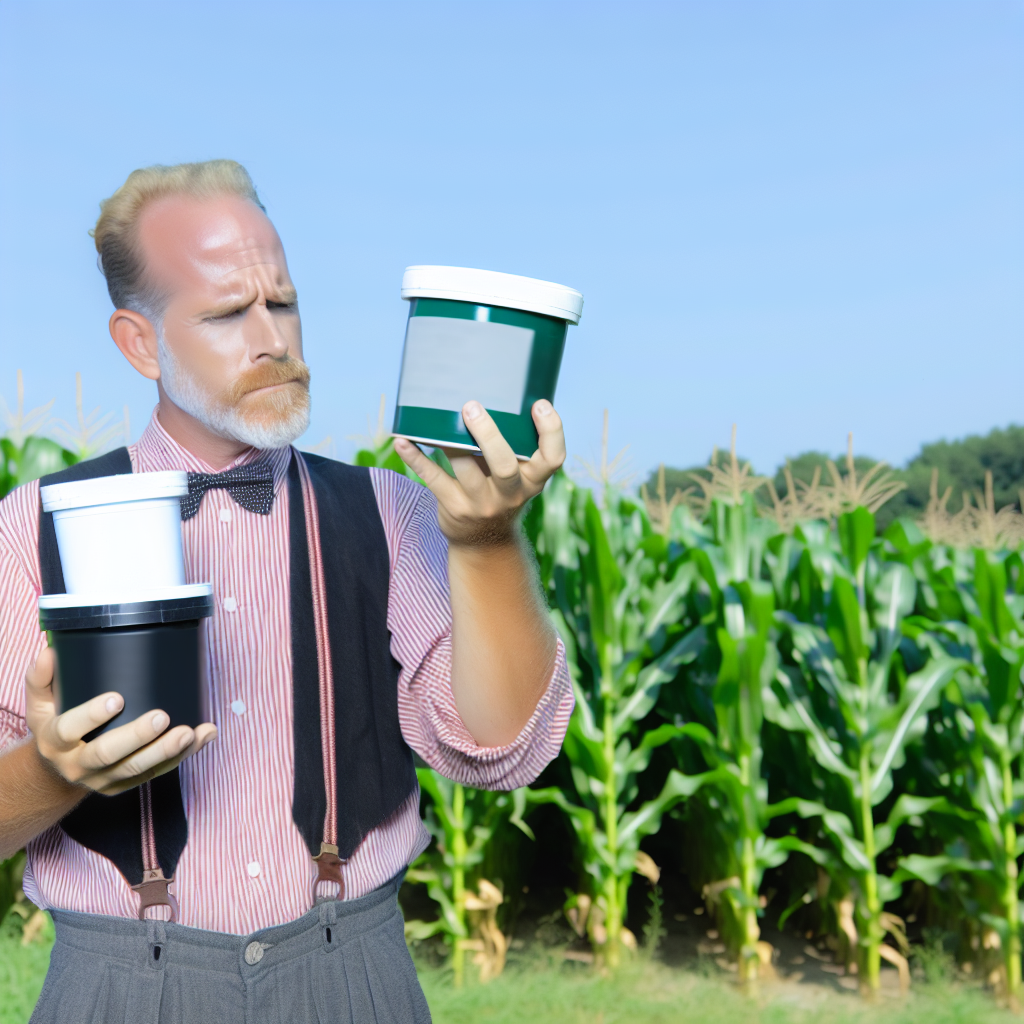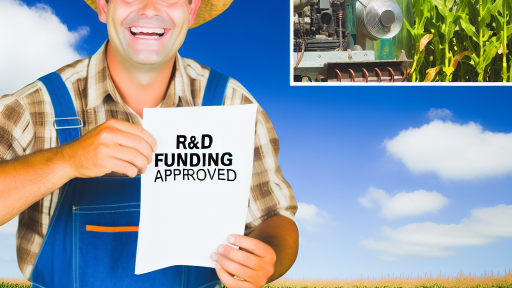Understanding the Importance of Sustainable Farming Practices
Preserving Natural Resources
Sustainable farming practices focus on conserving natural resources.
This method ensures that water, soil, and biodiversity remain intact.
Moreover, it minimizes the depletion of essential nutrients.
Effective management of resources leads to healthier ecosystems.
Promoting Biodiversity
Sustainable farming enhances biodiversity in agricultural landscapes.
Diverse crops help maintain balance in the ecosystem.
Additionally, it supports beneficial insects and microorganisms.
These organisms contribute to natural pest control and pollination.
Enhancing Food Security
Sustainable practices contribute to long-term food security.
They increase resilience against climate change and diseases.
Furthermore, they improve local food systems through diversity.
This diversity ensures a more stable food supply for communities.
Reducing Environmental Impact
Practicing sustainable farming reduces harmful environmental impacts.
It limits chemical runoff that can pollute water sources.
Additionally, it lowers greenhouse gas emissions associated with agriculture.
Transform Your Agribusiness
Unlock your farm's potential with expert advice tailored to your needs. Get actionable steps that drive real results.
Get StartedAdopting these methods helps combat climate change and promotes healthier landscapes.
Supporting Local Economies
Sustainable farming supports local economies by promoting local markets.
Farmers can sell their products directly to consumers.
This practice strengthens community connections and keeps profits local.
Moreover, it encourages the growth of organic farming initiatives.
Overview of Pesticides and Their Role in Agriculture
Defining Pesticides
Pesticides are substances used to prevent, control, or eliminate pests.
They include herbicides, insecticides, and fungicides.
Farmers apply these chemicals to protect crops from harmful organisms.
Consequently, using pesticides helps enhance agricultural productivity.
The Importance of Pesticides
Pesticides play a critical role in modern agriculture.
They help maximize crop yield and food quality.
Moreover, these substances are essential for managing pest outbreaks.
Farmers rely on them to ensure a stable food supply.
Types of Approved Pesticides
Approved pesticides vary in their formulation and intended use.
Natural pesticides are derived from plant or animal sources.
Synthetic pesticides are chemically manufactured for specific purposes.
Both types contribute to effective pest management strategies.
Regulations Surrounding Pesticide Use
Governments regulate pesticide approval for safety and effectiveness.
These regulations ensure that pesticides are safe for humans and the environment.
Farmers must adhere to strict guidelines when applying these chemicals.
Compliance with regulations helps promote sustainable farming practices.
Impact on Sustainable Farming
Using approved pesticides supports sustainable farming initiatives.
It minimizes damage to non-target organisms and promotes biodiversity.
Farmers can maintain healthy ecosystems while increasing crop productivity.
Showcase Your Farming Business
Publish your professional farming services profile on our blog for a one-time fee of $200 and reach a dedicated audience of farmers and agribusiness owners.
Publish Your ProfileConsequently, sustainable practices benefit both the environment and agricultural outputs.
Criteria for Selecting Approved Pesticides
Understanding Pesticide Efficacy
Effective pesticides must target specific pests without harming beneficial organisms.
Check the pesticide’s performance data from reputable studies.
Read reviews and testimonials from other farmers who have used the product.
Assessing Environmental Impact
Choose pesticides with a low environmental footprint.
Evaluate their persistence in soil and water.
Opt for products that degrade quickly to minimize residue.
Consider the potential effects on non-target species.
Health and Safety Regulations
Ensure the selected pesticides comply with local and federal regulations.
Consult the safety data sheets for detailed health information.
Look for products that have low toxicity ratings for humans and animals.
Cultural and Sustainable Practices
Select pesticides that fit within integrated pest management systems.
Prioritize products that support sustainable agriculture goals.
Explore organic options when possible for minimal chemical use.
Economic Considerations
Evaluate the cost-effectiveness of selected pesticides.
Compare application rates to calculate overall expenses.
Consider long-term savings from pest control strategies.
Explore Further: The Importance of Liability Coverage in Farm Insurance
Evaluating Pesticide Efficacy and Environmental Impact
Understanding Pesticide Efficacy
Pesticide efficacy refers to how well a product controls pests.
Farmers must assess the specific needs of their crops.
Selecting the right product can increase crop yield significantly.
Always consider the type of pests present in the field.
It is essential to follow manufacturer instructions for application.
Factors Influencing Efficacy
Choosing the appropriate formulation contributes greatly to efficacy.
- Factors like time of application play a crucial role.
- Weather conditions can also impact performance.
- The target pest’s life cycle must be considered.
Environmental Impact of Pesticides
Each pesticide can have varying environmental effects.
Understanding these effects is vital for sustainable farming.
Farmers need to evaluate potential risks to non-target species.
Soil and water quality assessment is equally important.
Utilizing integrated pest management can minimize negative impacts.
Regulations and Approved Products
Governments regulate pesticide use to protect ecosystems.
Farmers must familiarize themselves with local regulations.
Approved products are deemed safe for use under specific conditions.
Always refer to a reputable source for a list of approved pesticides.
Staying informed will ensure compliance and safety.
Alternatives to Chemical Pesticides
Consider non-chemical alternatives to minimize environmental risks.
- Biological control uses natural predators to manage pests.
- Crop rotation can disrupt pest life cycles effectively.
- Organic options offer a sustainable approach to pest management.
Adopting these practices enhances biodiversity and farm resilience.
Discover More: Understanding Organic Farming Regulations
Regulatory Agencies and Pesticide Approval Processes
Overview of Regulatory Agencies
Many countries rely on dedicated agencies for pesticide regulation.
In the United States, the Environmental Protection Agency (EPA) oversees pesticide approval.
Similarly, the European Union has its own regulatory framework for pesticides.
Showcase Your Farming Business
Publish your professional farming services profile on our blog for a one-time fee of $200 and reach a dedicated audience of farmers and agribusiness owners.
Publish Your ProfileThese agencies ensure that pesticides meet safety and efficacy standards.
Approval Processes for Pesticides
The pesticide approval process usually starts with extensive research.
Companies submit data on the pesticide’s safety, effectiveness, and environmental impact.
After initial review, agencies conduct an independent evaluation of the data.
This evaluation includes rigorous scientific studies and risk assessments.
Data Requirements for Submission
Applicants must provide comprehensive data in multiple categories.
The data should cover toxicology, environmental fate, and exposure assessments.
Additionally, applicants must include information on the pesticide’s intended use.
Public Involvement and Transparency
Public involvement is a vital component of the approval process.
Regulatory agencies often allow public comments on proposed pesticides.
This transparency helps build trust and addresses community concerns.
Post-Approval Monitoring
Once a pesticide is approved, monitoring continues to ensure safety.
Regulatory agencies conduct periodic reviews based on new scientific data.
They may also revoke approval if safety concerns arise post-approval.
Challenges in the Approval Process
Many challenges exist in the current pesticide approval process.
One significant challenge involves balancing agricultural needs with safety.
Another challenge is keeping pace with rapid scientific advancements.
Stakeholder engagement plays a critical role in addressing these challenges.
You Might Also Like: Rural Development Policies That Promote Sustainable Agriculture

Choosing Biopesticides vs. Conventional Pesticides
Understanding Biopesticides
Biopesticides are derived from natural materials like plants and microorganisms.
They offer a safer alternative to synthetic pesticides.
Farmers often find them effective against pests while being less harmful to beneficial organisms.
Types of Biopesticides
Biopesticides can be categorized into three main types.
- Microbial pesticides use natural microorganisms to control pests.
- Plant-based pesticides derive from plant extracts or oils.
- Biochemical pesticides interfere with specific biological processes in pests.
Benefits of Using Biopesticides
One advantage of biopesticides is their reduced toxicity to non-target species.
Moreover, they often have a lower environmental impact compared to conventional options.
Additionally, biopesticides can enhance soil health and biodiversity.
Exploring Conventional Pesticides
Conventional pesticides are synthetic chemicals created to eliminate pests.
They are often effective in controlling widespread infestations.
However, they may pose risks to human health and the environment.
Challenges of Conventional Pesticides
One major concern is the potential for pesticide resistance in pest populations.
Over-reliance on these chemicals can disrupt local ecosystems.
Furthermore, soil degradation can occur with repeated use.
Making Informed Choices
Farmers should weigh the pros and cons of each option carefully.
Consulting agricultural professionals can provide valuable insights.
Ultimately, integrating both types may yield better results for sustainable farming.
Delve into the Subject: Impact Of Conservation Programs On Farm Productivity
Best Management Practices for Pesticide Application
Understanding Pesticide Labels
Pesticide labels provide essential information for safe use.
Always read and follow the instructions carefully.
This ensures compliance with regulations and safety standards.
Pesticide labels indicate application rates and safety precautions.
Showcase Your Farming Business
Publish your professional farming services profile on our blog for a one-time fee of $200 and reach a dedicated audience of farmers and agribusiness owners.
Publish Your ProfileFailure to observe these guidelines can result in harm to people and the environment.
Selecting Appropriate Pesticides
Choose pesticides that are approved for your specific crops.
Research alternative pest management strategies when possible.
Consider bio-pesticides as they often have less environmental impact.
Evaluate the effectiveness and safety of each pesticide option.
This step builds a foundation for sustainable practices.
Timing of Application
Timing is crucial for effective pesticide application.
Apply pesticides during periods of low wind to minimize drift.
Additionally, target applications when pests are most active.
This approach enhances the impact while reducing waste.
Equipment Calibration and Maintenance
Properly calibrate all pesticide application equipment.
Calibration ensures accurate delivery of product to crops.
Regular maintenance prevents malfunction and improves efficiency.
This practice saves costs and protects the environment.
Monitoring and Evaluating Results
Monitoring pest populations helps determine the effectiveness of your applications.
Conduct evaluations post-application to assess impact.
Document results to inform future management decisions.
This ongoing process fosters continuous improvement in practices.
Training and Education
Educate all team members on pesticide safety and application.
Training empowers staff to handle pesticides responsibly.
Stay informed about new practices and regulations through workshops.
This knowledge enhances overall farm sustainability and safety.
Case Studies of Successful Sustainable Farming Using Approved Pesticides
Agricultural Innovations in Citrus Farming
Sunny Valley Farms implemented approved pesticides effectively in citrus farming.
They focused on integrated pest management strategies for optimum results.
As a result, they significantly reduced pest damage while promoting biodiversity.
In addition, their practices improved soil health and crop yields.
Organic Grain Production Success
Green Acres Cooperative exemplifies the successful use of approved pesticides in organic grain farming.
They integrated natural pesticide options to combat common grain pests.
This not only protected their crops but also maintained organic certification.
Consequently, their sustainable approach led to increased market demand.
Vegetable Farming and Pest Control
Harvest Fresh Farms achieved remarkable results using approved pesticides in vegetable crops.
They employed selective spraying techniques to minimize pesticide impact.
Furthermore, they combined these practices with crop rotation for long-term pest management.
This approach resulted in healthy crops and fewer chemical residues.
Case Study: Enduring Vineyard Success
Silver Mountain Vineyards faced pesticide challenges but adapted successfully.
By choosing environmentally friendly pesticide options, they safeguarded grape quality.
This strategy allowed them to maintain both profitability and sustainability.
Moreover, they educated other vineyard owners on best practices, fostering community growth.
Insights from a Greenhouse Project
Crystal Bloom Greenhouse illustrates the power of approved pesticide use in controlled environments.
They implemented biopesticides to manage pests without harming beneficial species.
Showcase Your Farming Business
Publish your professional farming services profile on our blog for a one-time fee of $200 and reach a dedicated audience of farmers and agribusiness owners.
Publish Your ProfileThis practice increased plant health and yield while reducing waste.
Additionally, they shared knowledge with local farmers about their successful methods.
Additional Resources
What is the Farm Bill? – National Sustainable Agriculture Coalition




